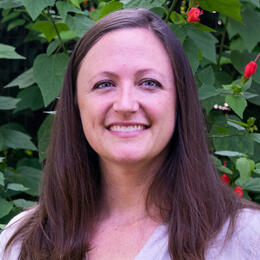In the busy industrial and residential city of North Charleston lies a piece of land that has been rebirthed from a long history of human development.
Former uses dating back to the 1600s included a plantation, and most recently it was a subdivision that lay vacant and in disrepair for a number of years. Susan Pearlstine of the Pearlstine Company had the vision to restore this land to some of its original glory of green spaces, roaming wildlife, and expansive river vistas.
An epic undertaking of removing dilapidated structures and impervious surfaces brought this land back to a more natural state. With the view of the Ashley River now unencumbered by infrastructure, The Bend was born and is now taking shape as a community gathering place and greenspace for humans and wildlife alike!
To kick off South Carolina’s first Native Plant Week last month Audubon South Carolina connected with Chet Morse, site director of The Bend and our birding buddy, to showcase native plants while providing an educational experience. Clemson Extension loaned us tools and arranged for Kathy Stone, Master Gardener extraordinaire, to coordinate a pollinator garden workshop. With a group of eager volunteers and funding from the Native Plant Society, we created a native pollinator garden to highlight the Bend’s iconic sign on Azalea Avenue.
On one of the first cool mornings in October, the sun rose on the future site of the native pollinator garden. The excitement and enthusiasm for native plants and pollinators was palpable! Our tireless crew installed a variety of plants, entertaining a Gulf Fritillary Butterfly that couldn’t even wait until we got them in the ground! Then the group stood back and soaked in the feeling of accomplishment, viewing the beautiful micro-habitat created in just two hours.
Since then, Chet has meticulously watered and cared for the fragile young plants that, even in their small and unestablished state, have already become a beacon for pollinators in a once- hardened concrete landscape. Come spring we’ll see these native beauties flourish to their full potential — to benefit all the wild creatures that happen upon this oasis on the Ashley River.




